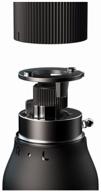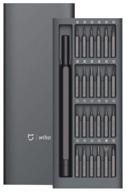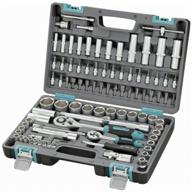
Review on AIMS Power CON120AC1224DC AC Converter & Battery 12V or 24V Smart Charger 75 amps UL 458 & CSA Listed by Nathan Tank

Good charger with active PFC, but beware of parasitic battery discharge when the power is off!
As mentioned by other reviews this charger has Active Power Factor Correction (PFC) which is very important to get more usable power out of small generators! Curiously, this feature is not advertised, which allowed me to get 35-40% more charging power from a small Honda EU-1000i compared to a similarly efficient but PFC-free Iota DLS-27-25 replacing this unit, which was like not overloading the Honda. It's nice to have a simple regulator to limit the current; My Iota required a physical replacement of the shunt resistors inside. Set at 74% of maximum output, this AIMS delivers 740W (28.0A @ 26.4V DC) to my 24V battery while delivering 890W (900VA) AC from the generator at a great 0, 97- pulls. 0.98 power factor as measured by Kill-a-Watt. 740 watts out / 890 watts in = 83% efficiency as stated - good, but not outstanding. It uses traditional Schottky diodes at the output instead of synchronous rectification, which might improve efficiency somewhat. The main disadvantage I see is that it draws a small but significant stray DC current if left connected to a non-AC battery bank. The source is worse if you leave the toggle switch on, a full 5.0W (0.2A at 26V) from a 24V pot, or 3.2W at 12V (0.24A at 13.4 V), but even with the switch off, it draws a constant 0.11-0.13A depending on the DC battery voltage (about 1.5W at 12V, 3.2W at 24V). It's the same as leaving a small 12V bulb or a couple of LED bulbs on all the time, and they can easily drain the battery if left unplugged for long periods of time, like on an RV or boat can happen. So if you intend to leave it permanently connected to the batteries I would recommend a suitably rated DC isolator, switch or relay to isolate the output when not charging. at the outlet and on a manual start generator, making sure the switch is only on while charging is probably not a problem. An autostart generator may require more attention. As soon as DC voltage is applied to the terminals, you will hear the "click" of the relay inside - I suspect it is the large 100A relay (CAR1AP100DC12-S) shown in one of my photos. , possibly designed for reverse polarity protection (is the coil connected in series to the DC terminals with a diode?) Consumes 120mA continuously even when the power switch is off. Portions of the control circuit appear to be powered from a connected battery as well. However, if you plug in AC without a battery connected, it won't turn on at all, drawing 0W AC (but 11-20VA; probably filter caps per line), and applying no voltage at all to its DC terminals. That means you can't charge a completely dead battery, and someone not expecting this behavior (which the guide doesn't mention) might think the charger is completely dead. In general, the instructions could be improved, in some places they are completely wrong, for example where it is mentioned that 12V vs. 24V must be selected manually. Apart from that, the charger looks well built, with good input filtering and noise reduction. I've attached some photos of the innards taken when I opened it up briefly to change the direction of the fan's airflow to avoid natural convection when installed with the DC connectors facing up. It's easy to fit, just 6 small screws to loosen and no gaskets, glue etc. Big electrolytic caps from a "YST" brand that I'm not familiar with. I can't read the branding on the three smaller ones behind the fan without looking further. The control board has at least one trimmer (attached with glue or epoxy) that can be used for fine cleaning. Adjust voltage if none of the four defaults selected by the dip switches suit your needs, although I haven't tried that. Without opening it, you can also reduce the voltage by connecting a variable resistor to the battery temperature sensor terminal.
- Easy Installation
- Some Difficulties
New products
Comments (0)
Top products in 🔋 Jump Starters, Battery Chargers & Portable Power
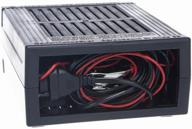
Charger Vympel 57 black

110 Review
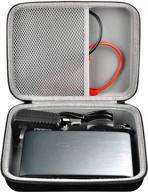
Case Compatible With Halo Bolt Portable Car Battery Jump Starter 58830/44400/57720 MWh Charger. Power Bank Holder For Halo Power Station 100/For AC Outlet.(Not Fits For Halo Bolt Air, Box Only)

24 Review
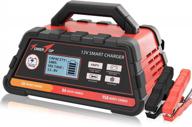
Keep Your Battery Fully Charged With A Smart 12V Charger/Maintainer Featuring Winter Mode

28 Review

Mroinge Automatic 6V/12V Trickle Charger For Vehicles, Motorcycles, Boats And More - Maintain Your Batteries With Ease!

29 Review


